bamboo
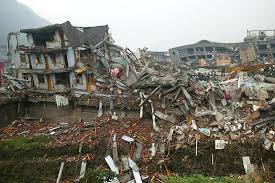 The majority of earthquakes are minor and cause little damage, They are quite common, and for the most part, we never hear about them. On the other hand, on January 23, 1556 an earthquake hit Shaanxi, China. While this didn’t even come close to being the largest earthquake ever recorded, it remains the deadliest to this day. Scientific investigation revealed that the magnitude of the quake was approximately 8.0 to 8.3. The largest earthquake in history was the 1960 Valdivia earthquake, registering 9.4 to 9.6. The Valdivia was without doubt much larger that the Shaanxi China quake, but the size of a quake isn’t the only thing that makes it the worst.
The majority of earthquakes are minor and cause little damage, They are quite common, and for the most part, we never hear about them. On the other hand, on January 23, 1556 an earthquake hit Shaanxi, China. While this didn’t even come close to being the largest earthquake ever recorded, it remains the deadliest to this day. Scientific investigation revealed that the magnitude of the quake was approximately 8.0 to 8.3. The largest earthquake in history was the 1960 Valdivia earthquake, registering 9.4 to 9.6. The Valdivia was without doubt much larger that the Shaanxi China quake, but the size of a quake isn’t the only thing that makes it the worst.
The epicenter of the Shaanxi quake was in the Wei River Valley in the Shaanxi Province, near the cities of Huaxian, Weinan and Huayin. In Huaxian, every single building and home collapsed, killing more than half the residents of the city, a number estimated in the tens of thousands. It was a similar 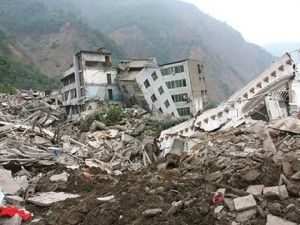 story in Weinan and Huayin. In some places, 60-foot-deep crevices opened in the earth. Serious destruction and death occurred as much as 300 miles away from the epicenter. The earthquake also triggered landslides, which contributed to the massive death toll. In all, an estimated 830,000 people lost their lives in the Shaanxi earthquake. Counting casualties is often imprecise after large-scale disasters, especially prior to the 20th century, but this disaster is still considered the deadliest of all time.
story in Weinan and Huayin. In some places, 60-foot-deep crevices opened in the earth. Serious destruction and death occurred as much as 300 miles away from the epicenter. The earthquake also triggered landslides, which contributed to the massive death toll. In all, an estimated 830,000 people lost their lives in the Shaanxi earthquake. Counting casualties is often imprecise after large-scale disasters, especially prior to the 20th century, but this disaster is still considered the deadliest of all time.
The quake struck in late evening, with aftershocks continuing through the following morning. A magnitude 8.0 to 8.3 earthquake isn’t close to the strongest tremor on record. However, the quake struck in the middle of a densely populated area with poorly constructed buildings and homes, resulting in the horrific death toll. Even if the number of deaths caused by the Shaanxi earthquake has been overestimated slightly, it would still rank as the worst disaster in history by a considerable margin. The earthquake and tsunami in Indonesia in 2004 is 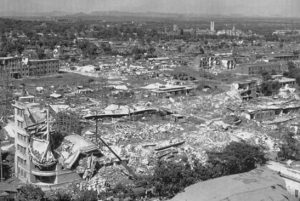 generally considered the second deadliest disaster in history.
generally considered the second deadliest disaster in history.
The local records indicate that, in addition to inspiring searches for the causes of earthquakes, this particular quake led the people in the region affected to search for ways to minimize the damage caused by such disasters. Many of the casualties in the quake were people who had been crushed by falling buildings. Thus, in the aftermath of the 1556 quake, many of the stone buildings that had been leveled were replaced with buildings made of softer, more earthquake-resistant materials, such as bamboo and wood. By all accounts, this was an earthquake like no other.
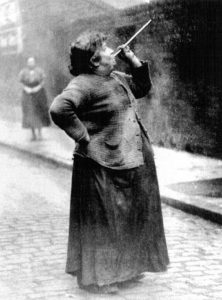 For those of us who have to set an alarm to get up for work, or whatever else one might need an alarm for, the alarm clock truly is not our friend. Whether you had a good night’s sleep or not, really doesn’t matter either. You also know that if the power goes off, or you just don’t happen to hear that alarm, because you are a heavy sleeper…well, you’re going to be late, and your boss is not going to be happy. That alarm going off is always annoying. Nevertheless, we have somewhere we need to be, so that incessant, obnoxious, blaring alarm is a necessity.
For those of us who have to set an alarm to get up for work, or whatever else one might need an alarm for, the alarm clock truly is not our friend. Whether you had a good night’s sleep or not, really doesn’t matter either. You also know that if the power goes off, or you just don’t happen to hear that alarm, because you are a heavy sleeper…well, you’re going to be late, and your boss is not going to be happy. That alarm going off is always annoying. Nevertheless, we have somewhere we need to be, so that incessant, obnoxious, blaring alarm is a necessity.
So, what did people do before alarm clocks? They still had to be to work on time, but if they were a person who did not wake up at the crack of dawn, or to the rooster crowing, what then? Now imagine that your only alarm clock is the sun. If your room is dark, you could have a big problem. Well, there was a fix for that. During the early days of the Industrial Revolution and lasting into the beginnings of the 20th Century, as late as the 1920’s, workers had to get to work on time, and there were no alarm clocks. That’s where the “Knocker-Up” or “Knocker-Upper” came in. Don’t laugh, it was a real occupation in England and Ireland in the days before alarm clocks were affordable or reliable. A Knocker-up’s whole job was to go to the homes of the workers, and wake them up by shooting a pebble through a long tube, usually made of bamboo, and hitting the window pane to wake them up. Some used a long stick, and I can see that it might be helpful if the client was a particularly heavy sleeper. A few whacks on the window sill would wake most people up. The knocker-upper was required to stay outside the house and continue this action until the worker came to the window to show that they were up and would not go back to sleep. In return for their services, the knocker-up’s clients paid them a few pence a week. Not a high paying job for sure. The knocker-ups were usually elderly men and women, or sometimes even the police, because it was a way to supplement their income, as they could do it on their morning patrols. 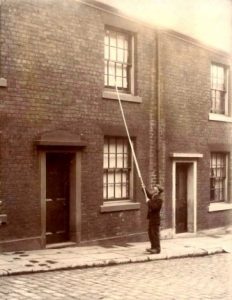
As alarm clocks became readily available, the knocker-ups were no longer needed. Nevertheless, like many other occupations of old, that no longer exist, these have their origins deeply rooted in history when people worked many varying trades and had to improvise to accomplish their tasks. Some of these professions are not what historians or genealogists consider to be mainstream work, but they are a rather interesting thing to look back on. I think it would be odd to have such a strange occupation, but I can see that it was necessary, and it wouldn’t require much time out of your day. Still, one question remains for me. Who was supposed to wake up the knocker-up? They would obviously have to be awake before the others needed to be, and if they were like me, getting me up early is not in anyone’s best interest…just ask my husband, if he should wake me up before the alarm goes off. While this may have been an honorable occupation in those days, I think it would not have been the occupation for me.

